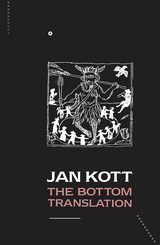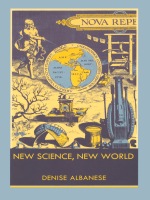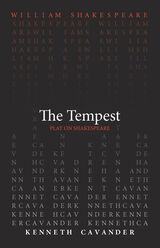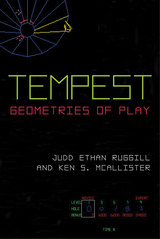7 books about Tempest

The Bottom Translation
Marlowe and Shakespeare and the Carnival Tradition
Jan Kott
Northwestern University Press, 1987
The Bottom Translation represents the first critical attempt at applying the ideas and methods of the great Russian critic, Mikhail Bakhtin, to the works of Shakespeare and other Elizabethans. Professor Kott uncovers the cultural and mythopoetic traditions underlying A Midsummer Night's Dream, The Tempest, Dr. Faustus, and other plays. His method draws him to interpret these works in the light of the carnival and popular tradition as it was set forth by Bakhtin. The Bottom Translation breaks new ground in critical thinking and theatrical vision and is an invaluable source of new ideas and perspectives. Included in this volume is also an extraordinary essay on Kurosawa's "Ran" in which the Japanese filmmaker recreates King Lear.
[more]

Giorgione's Tempest
Interpreting the Hidden Subject
Salvatore Settis
University of Chicago Press, 1990
The Tempest is Giorgione's most enigmatic painting. It is a depiction of Giorgione's own family, of the "family of man" tale from Boccaccio, or of the myth of Apollo's birth? In this remarkable study, Salvatore Settis uses the mystery of the painting to shed light on the relationship between artist, patron, work, and critic. The result is a brilliant piece of detective work in the history and sociology of culture that stresses the function of Giorgione's art for the emerging, classically educated connoisseur elite of sixteenth-century Venice.
[more]

New Science, New World
Denise Albanese
Duke University Press, 1996
In New Science, New World Denise Albanese examines the discursive interconnections between two practices that emerged in the seventeenth century—modern science and colonialism. Drawing on the discourse analysis of Foucault, the ideology-critique of Marxist cultural studies, and de Certeau’s assertion that the modern world produces itself through alterity, she argues that the beginnings of colonialism are intertwined in complex fashion with the ways in which the literary became the exotic “other” and undervalued opposite of the scientific.
Albanese reads the inaugurators of the scientific revolution against the canonical authors of early modern literature, discussing Galileo’s Dialogue on the Two Chief World Systems and Bacon’s New Atlantis as well as Milton’s Paradise Lost and Shakespeare’s The Tempest. She examines how the newness or “novelty” of investigating nature is expressed through representations of the New World, including the native, the feminine, the body, and the heavens. “New” is therefore shown to be a double sign, referring both to the excitement associated with a knowledge oriented away from past practices, and to the oppression and domination typical of the colonialist enterprise. Exploring the connections between the New World and the New Science, and the simultaneously emerging patterns of thought and forms of writing characteristic of modernity, Albanese insists that science is at its inception a form of power-knowledge, and that the modern and postmodern division of “Two Cultures,” the literary and the scientific, has its antecedents in the early modern world.
New Science, New World makes an important contribution to feminist, new historicist, and cultural materialist debates about the extent to which the culture of seventeenth-century England is proto-modern. It will offer scholars and students from a wide range of fields a new critical model for historical practice.
Albanese reads the inaugurators of the scientific revolution against the canonical authors of early modern literature, discussing Galileo’s Dialogue on the Two Chief World Systems and Bacon’s New Atlantis as well as Milton’s Paradise Lost and Shakespeare’s The Tempest. She examines how the newness or “novelty” of investigating nature is expressed through representations of the New World, including the native, the feminine, the body, and the heavens. “New” is therefore shown to be a double sign, referring both to the excitement associated with a knowledge oriented away from past practices, and to the oppression and domination typical of the colonialist enterprise. Exploring the connections between the New World and the New Science, and the simultaneously emerging patterns of thought and forms of writing characteristic of modernity, Albanese insists that science is at its inception a form of power-knowledge, and that the modern and postmodern division of “Two Cultures,” the literary and the scientific, has its antecedents in the early modern world.
New Science, New World makes an important contribution to feminist, new historicist, and cultural materialist debates about the extent to which the culture of seventeenth-century England is proto-modern. It will offer scholars and students from a wide range of fields a new critical model for historical practice.
[more]

The Tempest
William Shakespeare
Arizona Center for Medieval and Renaissance Studies, 2021
Considered by most scholars to be the last play that Shakespeare wrote, The Tempest is a stormy tale of betrayal and forgiveness. After being banished by his brother Antonio, Prospero harnesses the magic of an otherworldly island full of monsters and spirits to seek revenge. In reworking this play for a twenty-first-century audience, Kenneth Cavander focuses on the humor and the magic in the tale, much of which has largely escaped modern audiences in recent years.
Cavander’s translation of The Tempest, which premiered at the Alabama Shakespeare Festival in 2017, was written as part of the Play On! Shakespeare project, an ambitious undertaking from the Oregon Shakespeare Festival that commissioned new translations of 39 Shakespeare plays. These translations present the Bard’s work in language accessible to modern audiences while never losing the beauty of Shakespeare’s verse. Enlisting the talents of a diverse group of contemporary playwrights, screenwriters, and dramaturges from diverse backgrounds, this project reenvisions Shakespeare for the twenty-first century. These volumes make these works available for the first time in print—a new First Folio for a new era.
Cavander’s translation of The Tempest, which premiered at the Alabama Shakespeare Festival in 2017, was written as part of the Play On! Shakespeare project, an ambitious undertaking from the Oregon Shakespeare Festival that commissioned new translations of 39 Shakespeare plays. These translations present the Bard’s work in language accessible to modern audiences while never losing the beauty of Shakespeare’s verse. Enlisting the talents of a diverse group of contemporary playwrights, screenwriters, and dramaturges from diverse backgrounds, this project reenvisions Shakespeare for the twenty-first century. These volumes make these works available for the first time in print—a new First Folio for a new era.
[more]

Tempest
Geometries of Play
Judd Ethan Ruggill and Ken S. McAllister
University of Michigan Press, 2015
Atari’s 1981 arcade hit Tempest was a “tube shooter” built around glowing, vector-based geometric shapes. Among its many important contributions to both game and cultural history, Tempest was one of the first commercial titles to allow players to choose the game’s initial play difficulty (a system Atari dubbed “SkillStep”), a feature that has since became standard for games of all types. Tempest was also one of the most aesthetically impactful games of the twentieth century, lending its crisp, vector aesthetic to many subsequent movies, television shows, and video games. In this book, Ruggill and McAllister enumerate and analyze Tempest’s landmark qualities, exploring the game’s aesthetics, development context, and connections to and impact on video game history and culture. By describing the game in technical, historical, and ludic detail, they unpack the game’s latent and manifest audio-visual iconography and the ideological meanings this iconography evokes.
[more]

Tempest In The Caribbean
Jonathan Goldberg
University of Minnesota Press, 2003
Places sexuality at the center of Caribbean responses to Shakespeare's play.
Shakespeare's The Tempest has long been claimed by colonials and postcolonial thinkers alike as the dramatic work that most enables them to confront their entangled history, recognized as early modernity's most extensive engagement with the vexing issues of colonialism--race, dispossession, language, European displacement and occupation, disregard for native culture.
Tempest in the Caribbean reads some of the "classic" anticolonial texts--by Aimé Césaire, Roberto Fernández Retamar, George Lamming, and Frantz Fanon, for instance--through the lens of feminist and queer analysis exemplified by the theoretical essays of Sylvia Wynter and the work of Michelle Cliff. Extending the Tempest plot, Goldberg considers recent works by Caribbean authors and social theorists, among them Patricia Powell, Jamaica Kincaid, and Hilton Als. These rewritings, he suggests, and the lived conditions to which they testify, present alternatives to the masculinist and heterosexual bias of the legacy that has been derived from The Tempest.
By placing gender and sexuality at the center of the debate about the uses of Shakespeare for anticolonial purposes, Goldberg's work points to new possibilities that might be articulated through the nexus of race and sexuality.
Jonathan Goldberg is Sir William Osler Professor of English Literature at The Johns Hopkins University. His previous books include Shakespeare's Hand (2003), Desiring Women Writing (1997), Sodometries (1992), and, as editor, Reclaiming Sodom (1994) and Queering the Renaissance (1994).
[more]

Virgil and The Tempest
The Politics of Imitation
Donna B. Hamilton
The Ohio State University Press, 1900
READERS
Browse our collection.
PUBLISHERS
See BiblioVault's publisher services.
STUDENT SERVICES
Files for college accessibility offices.
UChicago Accessibility Resources
home | accessibility | search | about | contact us
BiblioVault ® 2001 - 2024
The University of Chicago Press









